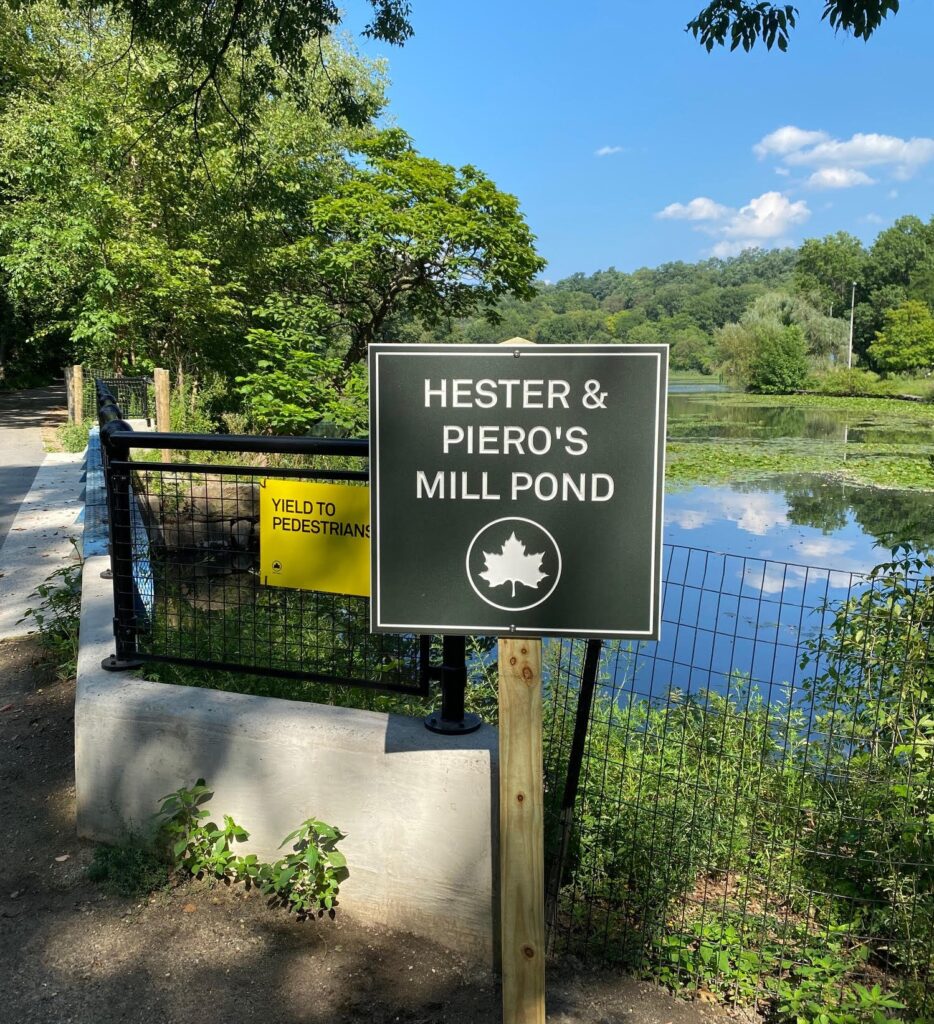Mill Pond
Visitors to the park might be surprised to learn that Van Cortlandt Lake (recently renamed Hester and Piero’s Mill Pond) is actually a pond, and moreover, it is a constructed body of water, not a natural phenomenon. Fed by the hillsides of Yonkers, Tibbetts Brook flowed through here and continued south into Kingsbridge where it emptied into the Spuyten Duyvil Creek. Just south of this point, Tibbetts Brook became a tidal estuary, where fresh water from the brook mixed with Salt Water from the Harlem River. The estuary supported a vast salt marsh from this point south that was abundant with oysters. In early colonial documents, that estuary and marsh was called by its Lenape name–Muscoota. Oysters were a valuable food source for the Lenape, who continued to harvest oysters in this area well into the 18th century. In addition to oysters, the cordgrass that grew in the salt marsh was highly sought after by European colonists for cattle grazing.
In the early 1700s, Jacobus Van Cortlandt owned a mill here that was powered by the current of Tibbetts Brook. But in 1718, he purchased additional land here from George Tippett for the purpose of creating a mill pond, which could provide more reliable power to the mill. After that land purchase, the brook was dammed and the land on either side of the brook was flooded to create the mill pond. While there are no surviving records documenting the construction, enslaved African laborers certainly performed the hard work of building the dam, as was true of all labor-intensive construction projects on the plantation.
In the mid-1700s, Piero, the enslaved African miller, produced grain and lumber at the gristmill and sawmill at the south end of the mill pond. From there, these products were brought to market by an enslaved African boatman named Levellie. It is likely that Levellie navigated his boat on Tibbetts Brook through the salt marshes of Kingsbridge and then onto New York City, with lower Manhattan, and its large food market, as his destination.
The saw and grist mills that were powered by the mill pond continued in operation through the 19th century. In the days before electric refrigeration, the mill pond was used to supply local families and businesses with ice. John Tremper, who lived on the southern bank of the lake operated an ice-supply business that served Yonkers in the 1870s.
In the years that followed, the pond would be used for recreation. In the summer, boaters and fishermen enjoyed use of the pond. In winter ice-skaters and curlers would play on its frozen ice. Nature lovers could enjoy the visiting birds and serene landscape. The mill pond remains as part of the lasting legacy of the enslaved people that shaped the landscape of Van Cortlandt Park.


